Abstract
Fluorescence was measured in leaves of the CAM plant Kalanchoë daigremontiana using a pulse modulation technique at room temperature. During a 12-h light period at 500 micromole photons per square meter per second (400-700 nanometers) in air containing 350 microbar CO2, the component of fluorescence quenching related to the reduction state of Q, the primary electron transport acceptor of PSII, remained fairly constant and showed that only 20% of Q were in the reduced form. The reduction state was slightly increased at the onset and at the end of the light period. By contrast, the nonphotochemical component of fluorescence quenching which is a measure of the fraction of nonradiative deexcitation underwent marked diurnal changes. Nonradiative energy conversion was low during the phase of most active malic acid decarboxylation in the middle of the light period when uptake of atmospheric CO2 was negligible, and when internal CO2 partial pressures were higher than in air; this allowed for high rates of CO2 reduction in the chloroplasts. Nonradiative energy conversion was high during the early and the late light period when atmospheric CO2 was taken up and internal CO2 partial pressures were below air level. Manipulation of the internal CO2 partial pressure during the late light period by increasing or decreasing the external CO2 partial pressure to 1710 and 105 microbar, respectively, led to changes in the magnitude of energy dependent fluorescence quenching which were consistent with the relationship between nonradiative energy dissipation and internal CO2 partial pressure observed during the diurnal cycle. Again, the reduction state of Q was hardly affected by these treatments. Thus, changes in electron transport rate during the diurnal CAM cycle at a given photon flux density lead primarily to alterations in the rate of nonradiative energy dissipation, with the reduction state of Q being maintained at a relatively low and constant level. Conditions are described under which nonphotochemical dissipation of excitation energy reaches a maximum value and the reduction state of Q is increased.
Full text
PDF
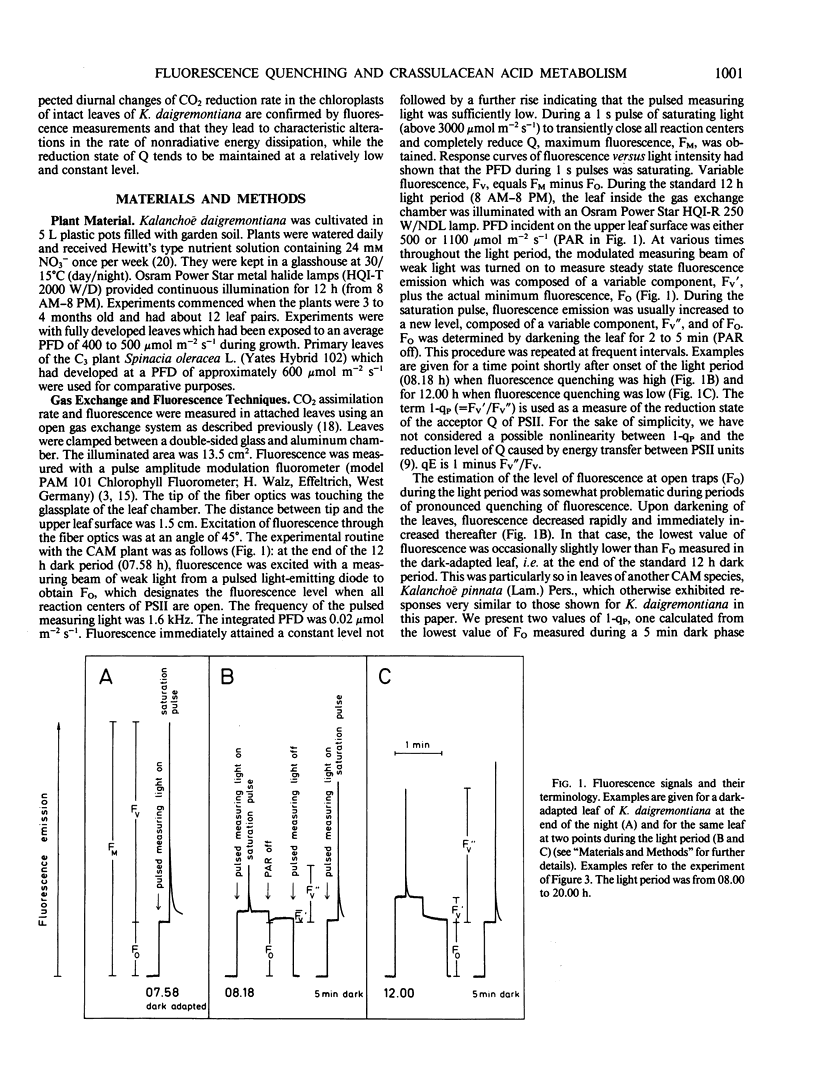
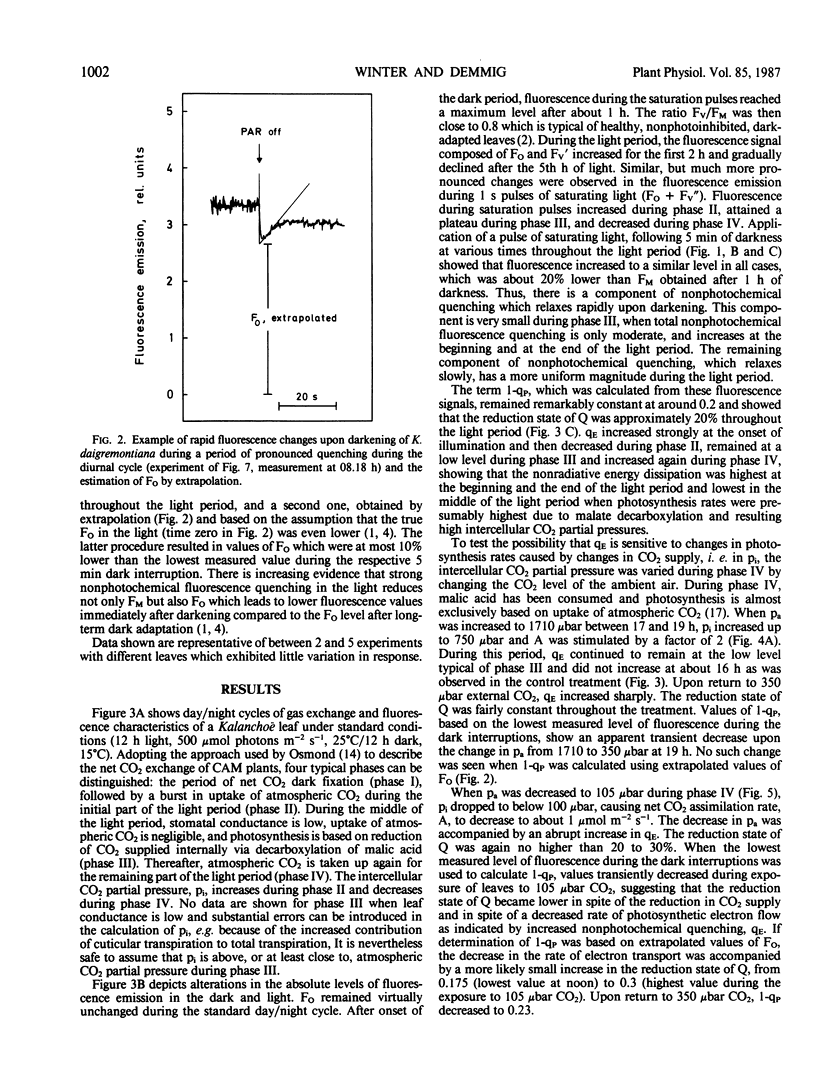

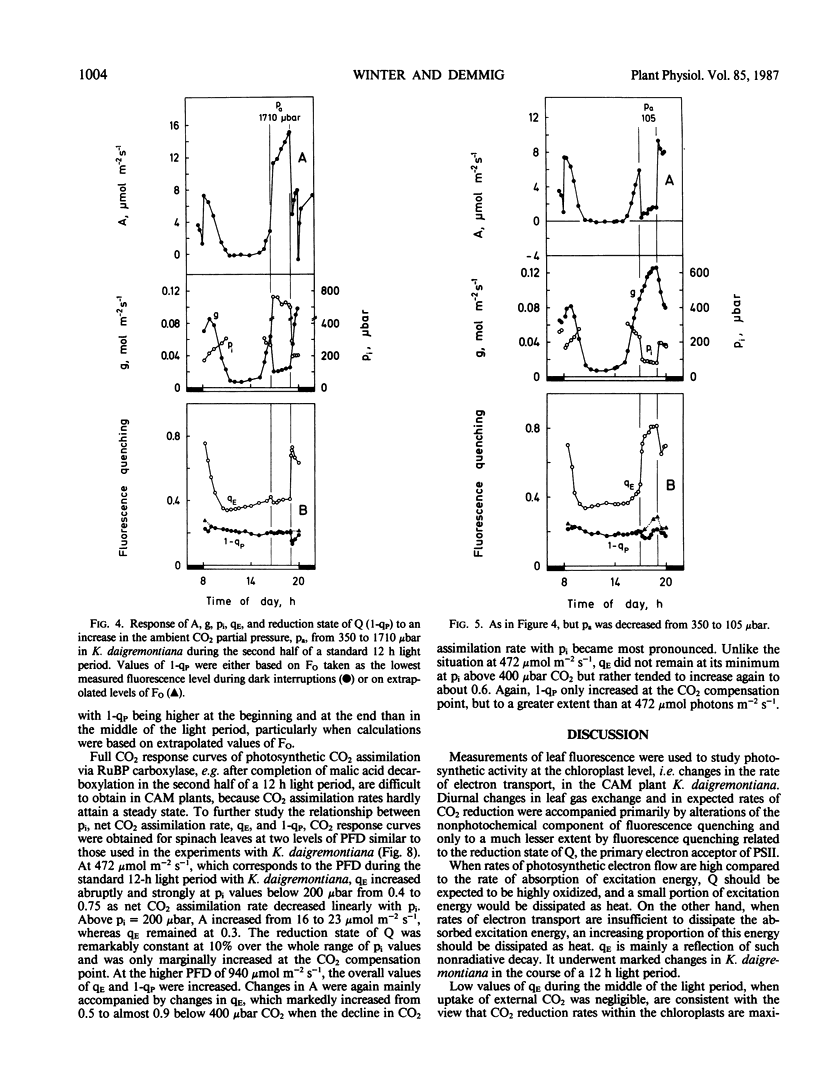
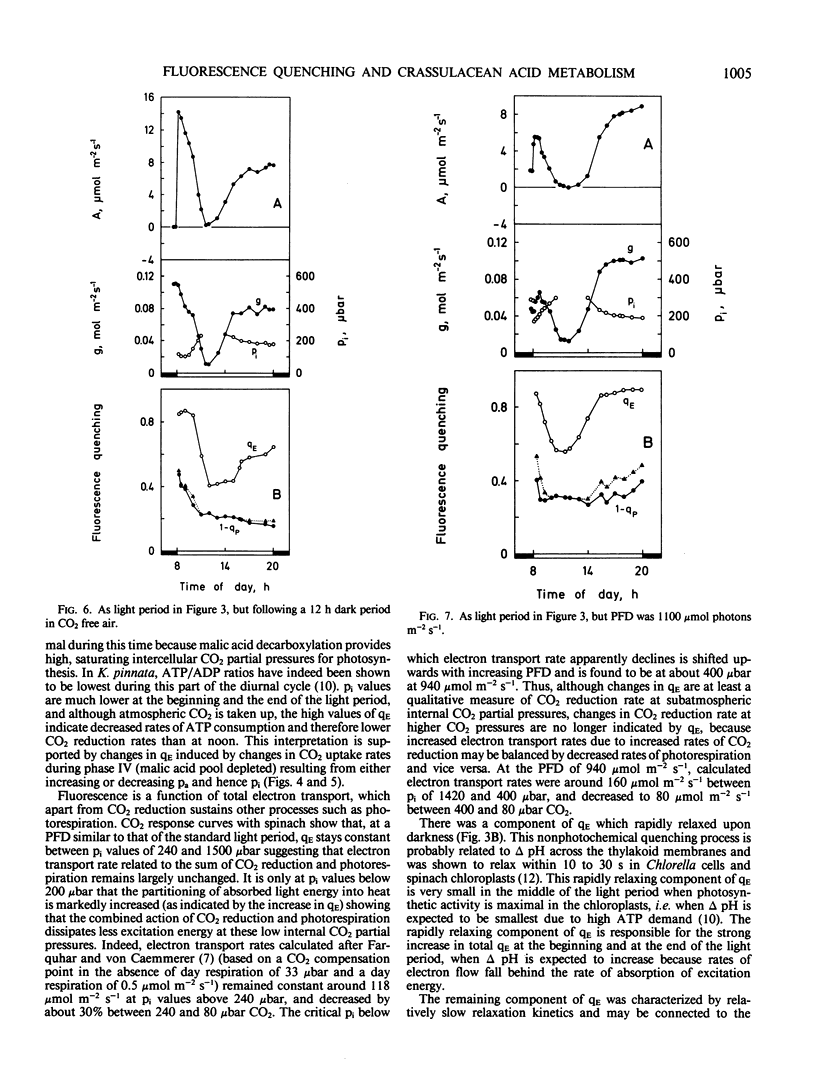
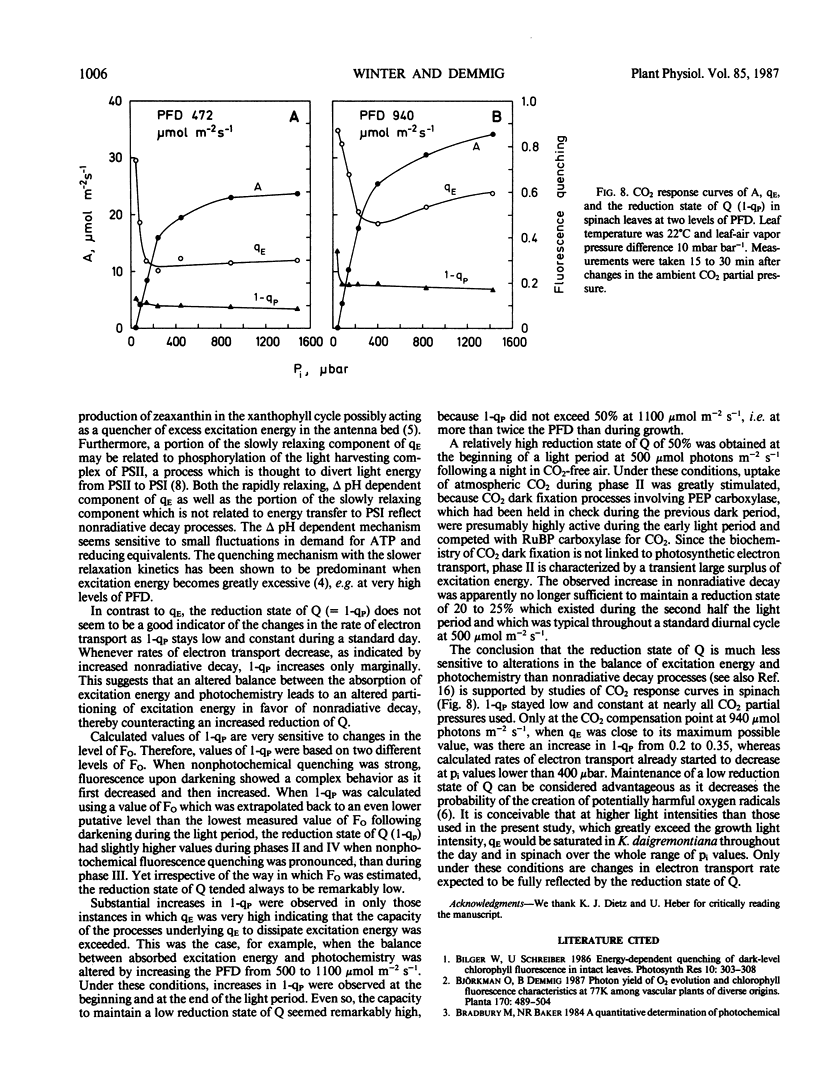

Selected References
These references are in PubMed. This may not be the complete list of references from this article.
- Demmig B., Winter K., Krüger A., Czygan F. C. Photoinhibition and zeaxanthin formation in intact leaves : a possible role of the xanthophyll cycle in the dissipation of excess light energy. Plant Physiol. 1987 Jun;84(2):218–224. doi: 10.1104/pp.84.2.218. [DOI] [PMC free article] [PubMed] [Google Scholar]
- JOLIOT A., JOLIOT P. ETUDE CIN'ETIQUE DE LA R'EACTION PHOTOCHIMIQUE LIB'ERANT L'OXYG'ENE AU COURS DE LA PHOTOSYNTH'ESE. C R Hebd Seances Acad Sci. 1964 May 4;258:4622–4625. [PubMed] [Google Scholar]
- Köster S., Winter K. Light Scattering as an Indicator of the Energy State in Leaves of the Crassulacean Acid Metabolism Plant Kalanchoë pinnata. Plant Physiol. 1985 Oct;79(2):520–524. doi: 10.1104/pp.79.2.520. [DOI] [PMC free article] [PubMed] [Google Scholar]
- Winter K., Schramm M. J. Analysis of Stomatal and Nonstomatal Components in the Environmental Control of CO(2) Exchange in Leaves of Welwitschia mirabilis. Plant Physiol. 1986 Sep;82(1):173–178. doi: 10.1104/pp.82.1.173. [DOI] [PMC free article] [PubMed] [Google Scholar]
- Winter K., Schröppel-Meier G., Caldwell M. M. Respiratory CO(2) as Carbon Source for Nocturnal Acid Synthesis at High Temperatures in Three Species Exhibiting Crassulacean Acid Metabolism. Plant Physiol. 1986 Jun;81(2):390–394. doi: 10.1104/pp.81.2.390. [DOI] [PMC free article] [PubMed] [Google Scholar]
- Wong S. C., Woo K. C. Simultaneous Measurements of Steady State Chlorophyll a Fluorescence and CO(2) Assimilation in Leaves: The Relationship between Fluorescence and Photosynthesis in C(3) and C(4) Plants. Plant Physiol. 1986 Apr;80(4):877–883. doi: 10.1104/pp.80.4.877. [DOI] [PMC free article] [PubMed] [Google Scholar]


